-
1 of 253523 objects
Vases à monter c. 1791-92
Hard-paste porcelain, platinum, two tones of gold and gilt bronze | 42 x 33.9 x 20.7 cm (with fittings) | RCIN 2347
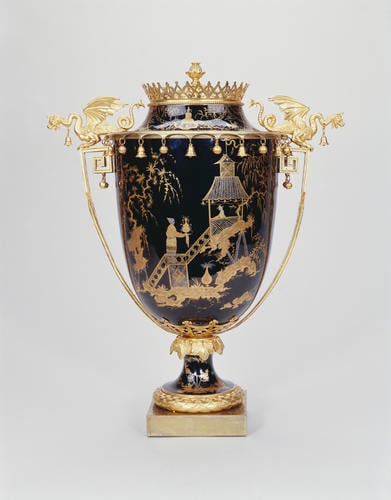
Sèvres porcelain factory
Master: Vases à monter c. 1791-92
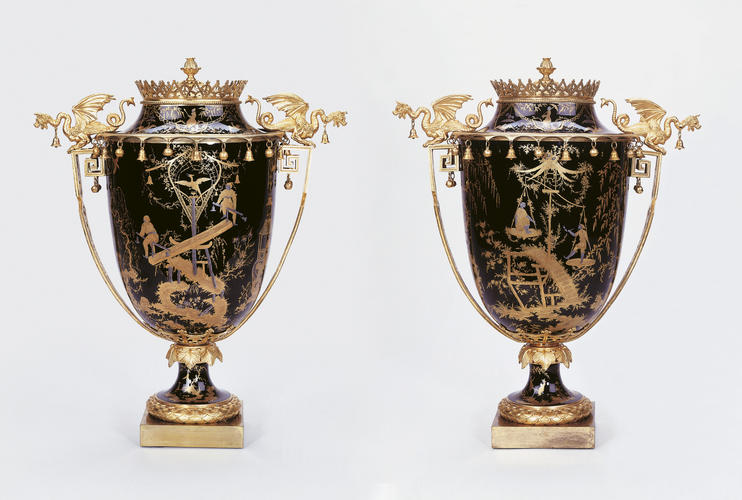
Sèvres porcelain factory
Vases à monter c. 1791-92
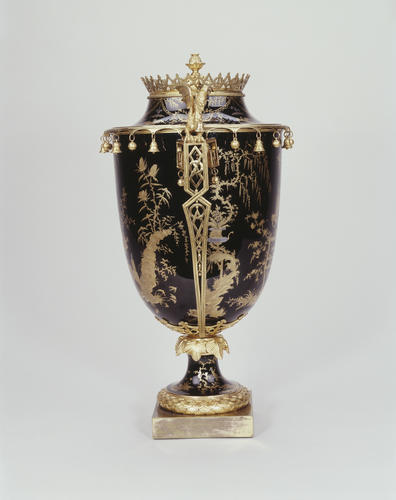
Sèvres porcelain factory
Master: Vases à monter c. 1791-92
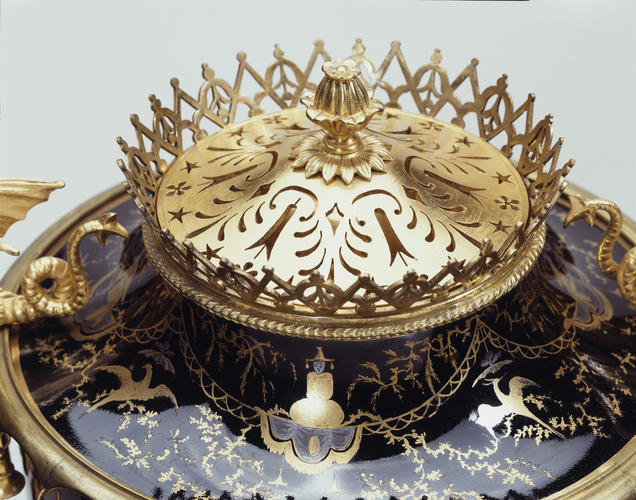
Sèvres porcelain factory
Master: Vases à monter c. 1791-92
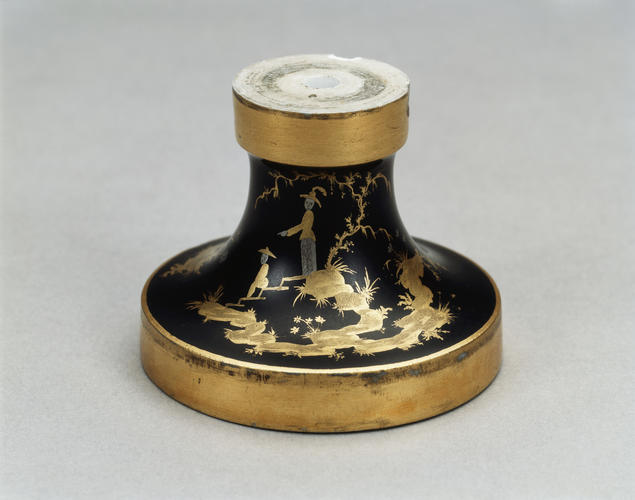
Sèvres porcelain factory
Master: Vases à monter c. 1791-92
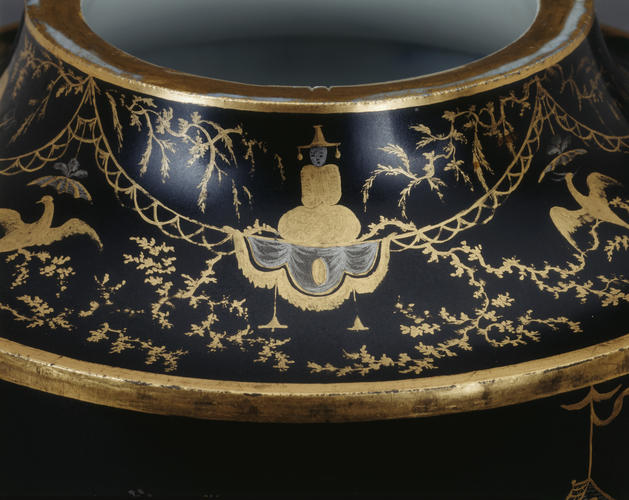
Sèvres porcelain factory
Master: Vases à monter c. 1791-92
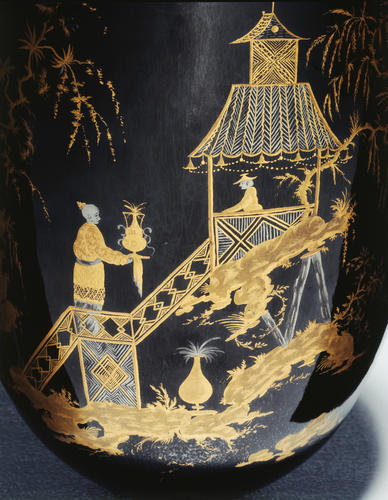
Sèvres porcelain factory
Master: Vases à monter c. 1791-92
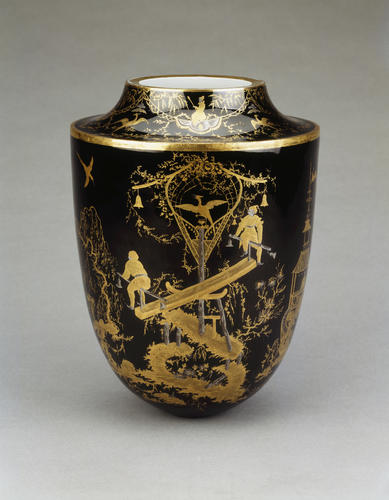
Sèvres porcelain factory
Master: Vases à monter c. 1791-92
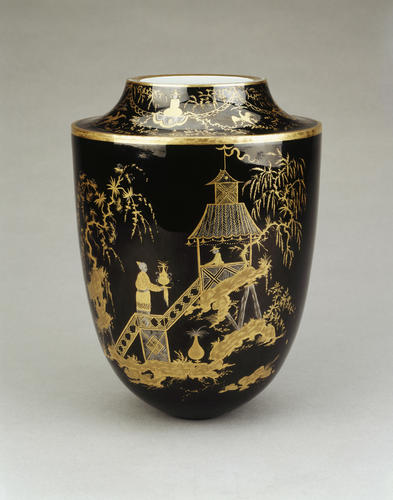
Sèvres porcelain factory
Master: Vases à monter c. 1791-92

Sèvres porcelain factory
Master: Vases à monter c. 1791-92
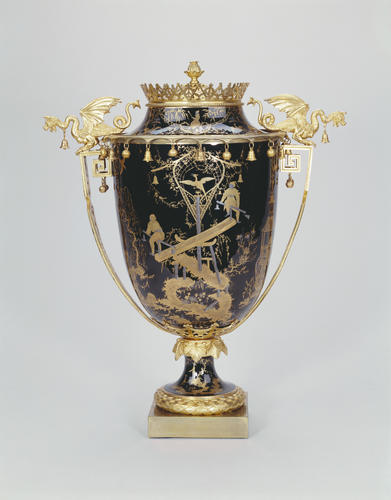
Sèvres porcelain factory
Master: Vases à monter c. 1791-92
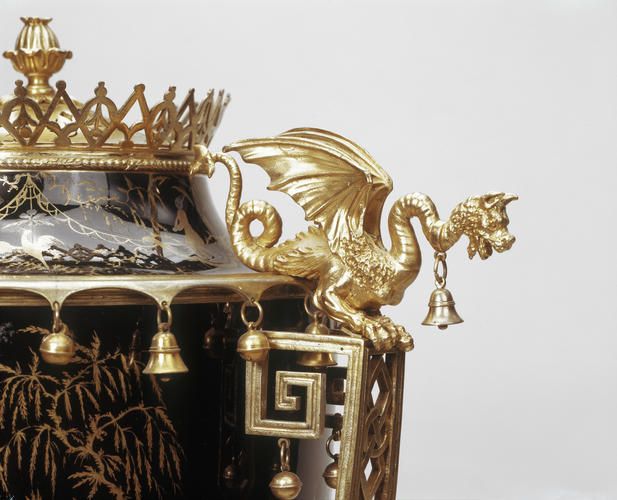
Sèvres porcelain factory
Master: Vases à monter c. 1791-92










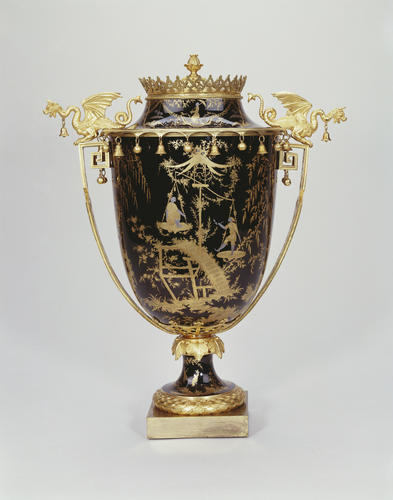


-
A pair of hard-paste porcelain vases with gilt-bronze mounts, the black ground painted with chinoiserie scenes in two tones of gold and platinum. Each urn-shaped vase has a short incurving neck and pierced lid with leaf finial, with a corona and bells around shoulders, and cast dragons over strapwork, pierced handles with Greek key scrolls, on a circular stem and moulded foot with square base.
The vases probably conform to designs provided by the marchand mercier dealer/decorator, Dominique Daguerre, who would have added the bespoke gilt bronze mounts.
The known sources for chinoiserie decoration on black ground Sèvres porcelain, introduced at the factory c.1790, include engravings after designs by Jean-Baptiste Pillement, Cantonese lacquer patterns, Chinese woodcuts and debased generic chinoiserie scenes. In this instance, two scenes on the vases are taken from engravings by Jean-Jacques Avril (1771-1835) after Pillement, published in the series Cahier de Balançoires Chinoises.
The use of platinum on a black ground, as a substitute for silver (which tarnishes), was a technical innovation introduced at Sèvres c.1789. It was used extensively in the 1790s on black ground vases and tableware decorated with chinoiserie scenes.
Text adapted from French Porcelain for English Palaces, Sèvres from the Royal Collection, London, 2009Provenance
Possibly bought by George IV from Robert Fogg for £157 10s in 1815. The vases are described in his bill for the quarter ending 10 October 1815 as ‘2 – do – [Seve Porcelain Vases] Black & Gold Ground immitation of Japan £157 10s’.
By 1 December 1817 they had been placed one on each of two console tables by Adam Weisweiler in the Rose Satin Drawing Room (Bow Room), Principal Floor, Carlton House. After being repaired by Charles Brandt at a cost of £2 (‘Restoring the ornaments of 2 Porcelaine Vauses Mounted with Bells &c sent to Brighton’), they were despatched to Brighton, as recorded by Benjamin Jutsham in his deliveries’ ledger on 6 November 1819 (‘2 Seve Vases Black ground, with Gilt Chinese Figures & Landscape, in Gilt, richly Mounted in or Molu, with perforated Handles, & Dragons on the Top & ornamental Bells, Or Molu Covers – & Small Base. From Bow Room’).
By 1824 they stood on a bookcase in the Library of Brighton Pavilion, where they are recorded five years later (‘A pair of Seve Porcelain Vases, black ground gold Land-scapes & Figures, mounted with honeysuckle pierced tops, & borders, Canopy, bell, & ball edge, pierced key handles & cups with dragons over, Seve stems, scale ormolu bases, & leaf tops, square plinths, sixteen & a half inches (No 38 case)).’ -
Creator(s)
(porcelain manufacturer)(nationality)(repairer)Acquirer(s)
-
Medium and techniques
Hard-paste porcelain, platinum, two tones of gold and gilt bronze
Measurements
42 x 33.9 x 20.7 cm (with fittings)
7.1 x 8.9 cm (whole object)
7.1 x 8.9 cm (whole object, square)
Other number(s)
Laking PC : Laking, G.F., 1907. Sèvres Porcelain of Buckingham Palace and Windsor Castle, London – Laking PC 299Place of Production
Sèvres [France]